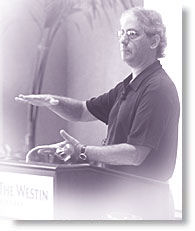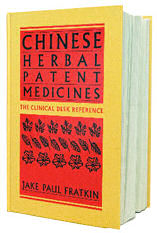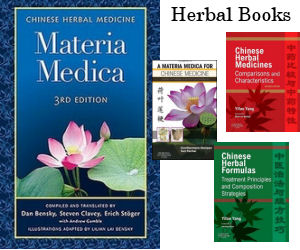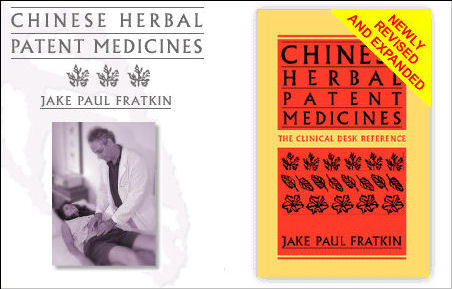Acupuncture & TCM Articles

Articles by Jake Paul Fratkin, OMD, LAc
Jake Fratkin, OMD, LAc, has been in the practice of Oriental medicine since 1978. Following undergraduate and graduate training at the University of Wisconsin in Chinese language and philosophy and pre-medicine, he pursued a seven-year apprenticeship in Japanese and Korean style acupuncture with Dr. Ineon Moon and a two-year apprenticeship in Chinese herbal medicine with Drs. Zhengan Guo and Pak-Leung Lau in Chicago. He also spent a year in Beijing hospitals interning in advanced herbal medicine, specializing in gastrointestinal and respiratory disorders, and pediatrics.  Dr. Fratkin is the author of several books, including Chinese Herbal Patent Medicines: The Clinical Desk Reference, and is the editor-organizer of Wu and Fischer's Practical Therapeutics of Traditional Chinese Medicine. In 1999, he was named the "Acupuncturist of the Year" by the American Association of Oriental Medicine.
Dr. Fratkin is the author of several books, including Chinese Herbal Patent Medicines: The Clinical Desk Reference, and is the editor-organizer of Wu and Fischer's Practical Therapeutics of Traditional Chinese Medicine. In 1999, he was named the "Acupuncturist of the Year" by the American Association of Oriental Medicine.
Chinese Herbal Patent Medicines: The Clinical Desk Reference
Hardback book, 1198 pages. This volume covers 1360 products, including 550 GMP level products and all of California FDB analysis on 505 products. Includes information on endagered animals, heavy metals, and pharmaceuticals. The text is organized into 12 groups, with a total of 109 chapters and includes material by Andrew Ellis, Subhuti Dharmananda, and Richard Ko. Over 80 pages of full-color photos (with English and Chinese cross-reference). Fully indexed.
Sushi Versus Stir-Fry
My Move from TCM Acupuncture to Japanese Acupuncture
My training has been a bit eclectic, but it is fair to say that I was solidly in the traditional Chinese medicine (TCM) camp from 1980 to 1989. I studied mainland Chinese TCM textbooks, with teachers from mainland China in the United States, and eventually I went to China for six months to study at various herbal hospitals. From 1982 to 1990 I taught TCM acupuncture and herbal medicine full time at several colleges.
My love and passion for TCM is rooted in herbal medicine: its understanding of disease through differentiation of syndromes, its diagnostic parameters of pulse, tongue and symptoms, its understanding of energetic zang-fu physiology, and its exhaustive investigation of medicinal substances. Besides its rich historical tradition, I am most impressed by its availability and application in modern China. The fact that 40% of China´s population uses Chinese herbs as their primary healing modality stirs me deeply. Working at Xi Yuan Hospital in Beijing, and knowing that 1500 patients are treated daily by traditional Chinese herbalists, convinces me of the suitability of Chinese herbs for modern societies.

My experience with TCM acupuncture has been less rewarding. In 1988 I organized and led fifteen American acupuncturists to Beijing for a six week training program in acupuncture. My experience there pointed out certain realities. One, acupuncture is mostly used for musculoskeletal disorders, trauma, and various pain complaints. In fact, about 80% of patients electing to have TCM invariably went to an herbalist rather than an acupuncturist.
Secondly, TCM acupuncture is complaint oriented, and subsequently, point-formula oriented. Very little differentiation is done outside of determining basic excess or deficiency patterns. If you have a frozen shoulder, you are given the frozen shoulder treatment. The same for epigastric pain, headache, sciatic pain, etc. The success of this approach demands treatments two or three times per week. And if the patient´s complaints are vague or multi-layered, a generalized tonification approach is given (using ST 36, BL 23, BL 20, KI 3, etc.).
Third, treatments require strong stimulation, which are often painful. The rationale for strong stimulation is to create and transmit strong qi into the points and channel. Chinese patients (and doctors) believe that without a strong de qi stimulation, the treatment will not be effective.
Fourth, acupuncture protocols follow the TCM herbal organization based on syndromes of the zang-fu, eight categories, and qi and blood. This is a modern application of acupuncture. In China, I saw little practice or interest in the classical Nan Jing descriptions of five phase relationships, secondary channels, point usage, etc. Every doctor knew about them, of course, having studied them in medical school, but in practice the zang-fu syndrome approach was almost universal, and acupuncture prescriptions were made to fit into this system.
Japanese Acupuncture Theory, Meridian Therapy Books
Japanese Classical Acupuncture: Introduction to Meridian Therapy, Traditional Japanese Acupuncture .
These problems are known to many American practitioners. In the practice of TCM acupuncture, we are limited to protocols for specific complaints. We use thick needles with deep insertion and strong manipulation, causing pain to our patients. And treatments given once per week seem to be inadequate, requiring administration of supportive herbal medicines.
I do not want to say that this approach is without success. It is what most American acupuncturists practice, and if one has any staying power in this profession, it is only because one is benefiting patients. For me, there is an inherent limitation: it offers mediocre success in complicated and multi-layered cases. And North American patients are complicated. They are coming to us after using pharmaceutical drugs, which injure the organs and confuse the energetic network; they have had many health problems over the years, which have transformed and gone deep into the body (compared with China, where a somewhat enlightened patient will go to a TCM practitioner soon after a problem arises); and, finally, American patients have compromised their health with poor eating habits and a sedentary lifestyle.
For these complicated cases, one needs a sophisticated approach. This is why I returned to Japanese style. I say return, because I was fortunate to study with a Korean teacher, Dr. Ine Moon, as my original teacher, starting in 1976. Dr. Moon, who presently lives in Santa Ana, California, practices his own version of meridian therapy, relying heavily on the classical five phase, connecting, source and horary points.
Dr. Moon´s consistent and unyielding position is this: balance the meridians. Determine excesses and deficiencies, and use the minimum numbers of needles to return these to balance. His belief in this approach has been unwavering.
Dr. Moon´s approach differs from the main meridian therapy school in this regard: he chooses to move excesses to deficiencies through connecting-source or five phase points, rather than tonification of the deficiencies as the primary approach. Also, Dr. Moon´s main diagnostic technique does not use pulse or abdominal diagnosis. He uses muscle testing, a technique he borrowed from applied kinesiology chiropractors in the mid-1970s. His skill and reliance on this technique helps him not only evaluate meridian imbalance, but also guides point selection. Dr. Moon´s clinical efficacy, by the way, is of the highest level.
My return to Japanese style began in 1989, following my discouragement with TCM acupuncture. I had been unable to follow Dr. Moon´s technique due to my own lack of skill in muscle testing, and I was open to other approaches. Starting at this time, I followed the teachings of Kiiko Matsumoto and Dr. Miki Shima, who revealed specific needle and moxa techniques for branch treatment. Also, Dr. Shima demonstrated other forms of meridian diagnosis for root treatment, including Akabane technique. I was amazed at the refinement, gentleness, and delicacy of the Japanese approach, and as I put these techniques into practice, at the effectiveness for my patients.
Since then, I studied Birch and Matsumoto´s Hara Diagnosis1 , and thereafter took various opportunities to study with Stephen Birch. Through him, I was introduced to the material of Fukushima and Manaka. In order to develop my interest, I taught a two semester course on Japanese acupuncture at the Colorado School of TCM, allowing me to study the works of Fukushima2 , Shudo3 , Manaka, and Serizawa 4 .
Having now been exposed to both TCM and Japanese approaches, I feel I can make some basic comparisons. First, Japanese meridian therapy prioritizes root treatment to balance the various excesses and deficiencies in the acupuncture channels. Root treatment is a whole body treatment, based on evaluating fundamental meridian imbalances, and restoring them to harmony. After the root imbalance is treated, the branch, or complaint oriented, treatment can be performed.
Combining both root and branch treatments is considered more effective than branch treatment alone, and in my clinical experience, recovery time for patients seems twice as fast in terms of the number of treatments required. Root balancing allows the energetic network to return to its most efficient posture, facilitating and accelerating healing.
In this regard, TCM acupuncture makes an effective branch, or complaint oriented, treatment. The TCM construct of local, distal and remote point selection is both powerful and balanced. When preceded with an accurate balancing of the channels in a root treatment, however, healing time is accelerated, and the effects last longer.
The second difference concerns an understanding of the energetic network. TCM acupuncture, based on zang-fu and eight category systemization, identifies basic energetic substances - qi, blood, yin, yang, jing and fluid - and describes energetic imbalances with terms such as excess, deficiency, stagnation, heat, cold, dryness, dampness, exterior, interior, etc. In TCM acupuncture, we are expecting a needle to tonify blood, or clear stagnation, and so on. This approach is very applicable in herbal medicine, where medicinal substances are chosen on the basis of their ability to do specific tasks. In needle therapy, however, one relies on a particular point, rather than a specific technique. For example, KI 3 is chosen to tonify yin; ST 36 for tonifying qi; LV 3 or GB 34 for invigorating stagnation of liver qi.
Japanese meridian therapy, on the other hand, is concerned with only two types of imbalance: channel excess and deficiency. Needle technique - direction, depth, rotation - is chosen to correct the particular imbalance. It is easy to see that the two systems are quite different. One corrects meridian imbalances, the other hopes to correct systems and organ pathologies. Personally, I think the TCM approach is better accomplished through herbal therapy.
The third difference is that of needle technique. The Chinese feel that qi must be manipulated at the level of the channel, in the flesh and beneath any layer of fat. This requires several centimeters of insertion with strong manipulation. For Japanese practitioners, the most energetic and influential aspects of qi are at the surface, no more than one to two millimeters into the skin. Needle techniques are quite subtle, and without sensation to the patient. Enhanced patient comfort, and improved clinical efficacy, are appreciated and rewarded by the American public.
Our fourth, and final, comparison has to do with diagnostics. In TCM, points are chosen according to recommendations based on the complaint. Rarely is palpation employed, either on the channel or the pulse, with the common exception of looking for a shi points. In Japanese style, however, pulse, point, and abdomen palpation are thoroughly relied upon. Besides the accuracy that this affords in choosing points for therapy, it returns acupuncture to its higher art, namely the skill and ability of the practitioner to discern the energetic imbalance of the patient.
Why have I turned to Japanese style? I can compare Japanese and Chinese styles by referring to cooking, looking at Japanese sushi versus a Chinese stir-fried rice dish. Both are very nutritious; both are delicious. But sushi is exquisite in its design, execution, and taste. It is delicate, thoughtful, and subtle. Stir-fry is tasty and satisfying, but it lacks finesse and sophistication. Ingredients are cut quickly, tossed without much thought, and served efficiently. If one is to pursue acupuncture as an art, one that requires a lifetime of study, practice, and effort, one should apply oneself to the more refined Japanese style. In this way, one will move beyond medical application, towards a cultivation of feeling, sensing, and affecting the patient´s energetic network. The ultimate achievement is not only enhanced health for the patient, but as important, personal development through self cultivation of a very ancient and spiritual art.
-------------------------
1. Hara Diagnosis: Reflections on the Sea  , Kiiko Matsumoto and Stephen Birch, Paradigm Publications. , Kiiko Matsumoto and Stephen Birch, Paradigm Publications.
2. Meridian therapy , Kodo Fukushima, Toyo Hari Medical Association, 1991. , Kodo Fukushima, Toyo Hari Medical Association, 1991.
3. Japanese Classical Acupuncture: Introduction to Meridian Therapy  by Denmai Shudo, translated by Stephen Brown, Eastland Press, 1990. by Denmai Shudo, translated by Stephen Brown, Eastland Press, 1990.
4. Clinical Acupuncture: A Practical Japanese Approach  , Katsusuke Serizawa and Mari Kusumi, Japan Publications, 1988. , Katsusuke Serizawa and Mari Kusumi, Japan Publications, 1988.
 
|
